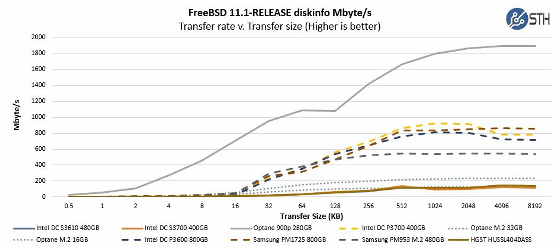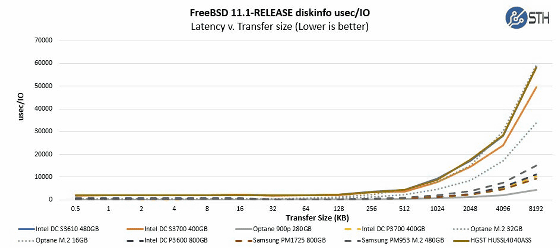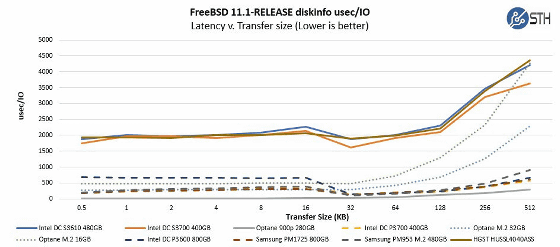How fast Intel Optane memory is on FreeBSD system, compare benchmark results with other memory

Memory speed benchmark software capable of simulating the ZFS ZIL / SLOG pattern using the FreeBSD library is starting to be released, but many benchmark software focus on pure writing speed or 70/30 workload On the other hand, drives with high write tolerance are often used in "cache" applications where data is written and erased. A comparative test is being conducted on how the performance differs between the traditional NAND SSD and Intel's new Optane SSD with ZFS, a powerful file format for organizing speed-conscious storage arrays.
Exploring the Best ZFS ZIL SLOG SSD with Intel Optane and NAND
https://www.servethehome.com/exploring-best-zfs-zil-slog-ssd-intel-optane-nand/
The STH that verified itPatrick KennedyHe is testing the various Intel and Samsung SSDs using a server called "Supermicro 2U Ultra" which adopts dual CPU of Intel Xeon E5 - 3650 V4, DDR 4 - 2400 memory of 256 GB, FreeBSD 11.1 for OS . For the compared SSD, the SATA drive is "Intel DC S3700(400 GB) ""Intel DC S3610(480 GB) ", the SAS drive is"HGST HUSSL 4040 ASS", NVMe SSD is"Intel DC P3700(400 GB) ""Intel DC P3600(800 GB) ""Samsung PM 1725 M.2(480 GB) ""Samsung PM 935 M.2(480 GB) ", Optane memory is"Intel Optane 900p(280 GB) ""Intel Optane M.2(16 GB) "has become.
· Transfer rate
In comparing the transfer rate values, as you can see in the bottom graph, the speed at which Optane 900p overwhelm the other memory was recorded. Optane memory lacks capacity and durability, but performance within the same category is overwhelming. Also, clear difference in speed can be confirmed between NVMe SSD and SATA / SAS SSD, and grouping is made from relative speed difference. Kennedy says NVMe SSD is enough if the network environment remains at 10 GbE, but if you are stepping up to 25 GbE or 40 GbE you should ask for optane memory.

· I / O latency
According to Kennedy, the important thing in ZFS ZIL / SLOG devices is I / O latency. Since most storage systems can not run at 100% 24 hours a day, 365 days, it seems that how much each I / O delay will become an important factor.
The SSD of SATA / SAS is delayed even at I / O latency, and NVMe SSD is competent. And Optane 900p shows high performance for leaving other memories behind.

Details of the transfer amount of 512 KB or less are as follows. Although Intel Optane M.2 has a capacity limit of 16 GB, it is interesting that it can be competed with the topmost MVMe SSD with a transfer size of 16 KB or less, Kennedy says. In addition, the Optane 900p, which shows overwhelming high performance, is one-tenth the latency of NVMe SSD for enterprises and it is as if it is likely to cling to the X axis.

According to Kennedy, the performance of Intel Optane stands out when using the latest FreeBSD diskinfo slogbench, and in fact it is enough to lose the choice of SATA or SAS drive. Furthermore, even the "Intel DC P3700" which was the previous generation killer SSD is said to be replaced by Intel Optane 900p. If you can accept a slight decrease in reliability when using a 10 TB ZFS system NAS in a 1 GbE environment, 32 GB Intel Optane M.2 will spend less than 100 dollars (about 11,000 yen), SATA It is possible to upgrade from / SAS system.

Related Posts:
in Hardware, Posted by darkhorse_log







